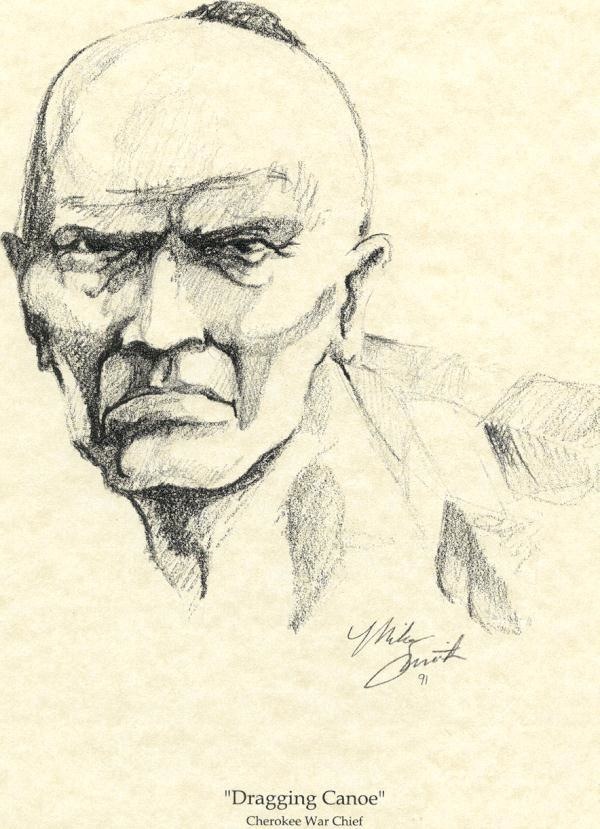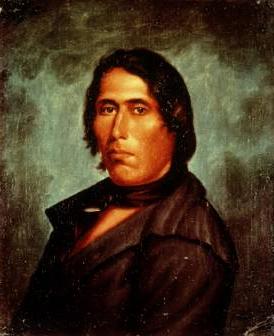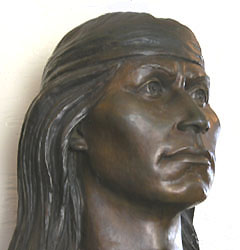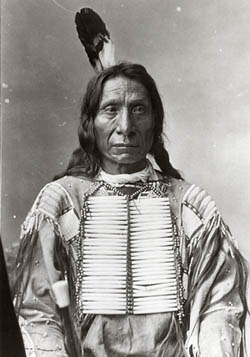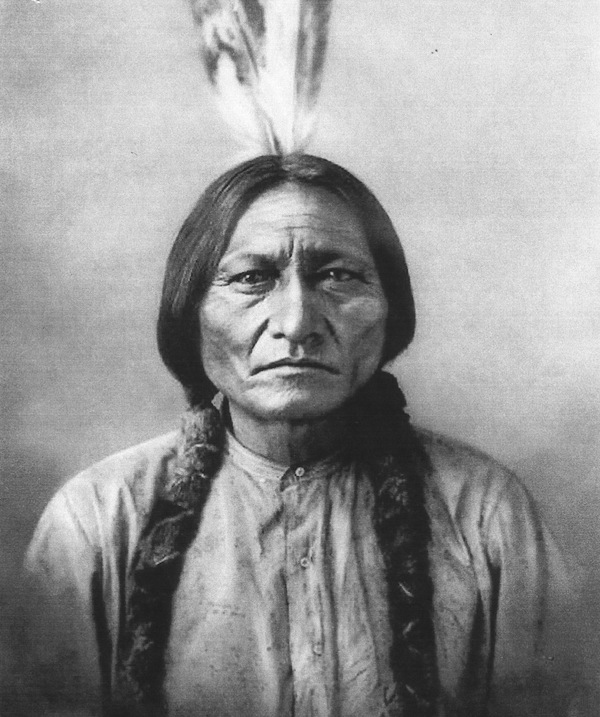Fight the Power: 100 Heroes of Native Resistance, Part 1
There were many Native heroes and many who resisted; here are a few from the 1700s and 1800s:
Dragging Canoe, born around 1738, was a Cherokee war chief. The first battle he fought in was during the Anglo-Cherokee War (1759-1761), and that earned him the reputation of being a strong opponent against encroachment. He then led the Cherokee against white settlers in North Carolina with Abraham of Chilowee in 1776. During the American Revolution his forces were often joined by Upper Muskogee, Chickasaw, Shawnee, Indians from other nations, British Loyalists, French and Spanish agents. He was a prominent war leader during the Chickamauga Wars (1776-1794). He died in 1792 after an all night celebration.
Tecumseh, born in 1768, was a Shawnee leader who not only resisted, he tried to unite all Native Americans so they could defend themselves against the growing United States. He and his warriors fought well. During the Siege of Detroit they joined the British and Tecumseh had his warriors parade out from the woods, circle back and come out again from another area, making it look like there were more warriors. The other side surrendered. Tecumseh was killed in 1813 during the Battle of the Thames, though the circumstances of his death are murky.
Mangas Coloradas, born around 1792, he saw encroachment by the Spanish from the south and white settlers from the east. He became a chief of the Membreno Chiricahua Apache in 1837 and led his men on a number of attacks to protect his peopleís land. He was Cochiseís father-in-law. In 1863, he was taken into custody at Fort McClane when he was supposed to be meeting with U.S. military leaders. Instead, he was tortured and killed allegedly while trying to escape. After his death his skull was sent to a phrenologist in New York City. The mutilation of an Apache leader increased hostility between Apaches and the United States, wars between the two continued for another 25 years.
Cochise, born in 1805, he was Geronimoís father-in-law, and served as principal chief of the Chokonen band of the Chiricahua Apache. He led an uprising against Americans that began in 1861. He was never photographed and was buried in a secret location. Cochise and his warriors used the Cochise Stronghold in the Dragoonís canyons as their fortress for many years. He did eventually sign the Broken Arrow Peace Treaty and died of natural causes in 1874 on the reservation.
Red Cloud, born in 1822, was an Oglala Lakota war leader, chief and worthy opponent against the United States Army. He led the successful campaign known as Red Cloudís War (1866-1868) over control of Powder River Country in northeast Wyoming and southern Montana. He scared encroachers off the Bozeman Trail and signed the Fort Laramie Treaty in 1868, mandating the United States allow the Lakota to keep the western half of South Dakota, including the Black Hills. He died in 1909 at the age of 87.
Geronimo, born in 1829, he was a member of the smallest band of the Chiricahua Apache, the Bedonkohe, spent his life resisting colonization of his homeland in the Southwest. After his mother, wife and three children were murdered by Mexican soldiers Geronimo spent the next 10 years taking revenge on the Mexican government. He was caught in 1877 and sent to the San Carlos Apache Reservation, but escaped in 1881 to continue fighting. He was a legend for more than a decade and followers saw him as the last defender of the Native American way of life. He was the last Chiricahua to surrender in 1886, but his celebrity didnít end there. He published his autobiography in 1905 and crowds gathered to catch a glimpse of the famous imprisoned Indian warrior. He died in 1909 after falling from a horse while riding home.
Sitting Bull, born around 1831, he became a legendary Lakota warrior and leader against white encroachment. He fought in his first war party at the age of 14. He is known as the architect in the defeat of General George Armstrong Custer, even though he himself did not fight in the Battle of the Little Bighorn. During a Sun Dance weeks before the battle, Sitting Bull had a vision of the victory. This would not be his only vision. After Custerís defeat he led his followers into Canada rather than continue to get harassed by the U.S. Army for not being on reservations. But the scarcity of buffalo forced them to return. He surrendered to the United States in 1881, but was so famous he could charge up to $2 for an autograph and joined Buffalo Bill Codyís Wild West Show for a season. Another vision told him he would be killed by his own people. This vision also came true when Lakota policemen came to question him in 1890 about a Ghost Dance movement and he was shot during a confrontation between them and his relatives and neighbors.
Crazy Horse, born in 1840, was an Oglala Sioux Indian chief who resisted removal efforts. He refused to be photographed and never signed any documents. His goal was to regain the land and way of life his Lakota people had known when he was child, when they had the full Great Plains to themselves. But, the discovery of gold in the Black Hills made that an impossibility. Lakota were forced onto reservations, but Crazy Horse and is ally Sitting Bull refused. In 1876, the two of them led 1,200 Oglala and Cheyenne warriors against General George Crook, making his men turn back as they advanced on Sitting Bullís encampment on the Little Bighorn River. A week later, General George Armstrong Custer was defeated in the Battle of the Little Bighorn, likely the greatest victory for Natives Americans over U.S. troops. Sitting Bull led his men into Canada while Crazy Horse continued to fight. He surrendered in May 1877 and died at Fort Robinson in September 1877 after being bayoneted in the kidneys.
© 1998 - 2013 Indian Country Today. All Rights Reserved To subscribe or visit go to: http://www.indiancountry.com
Read more at http://indiancountrytodaymedianetwork.com/2013/07/24/fight-power-100-heroes-native-resistance-part-1-150552
